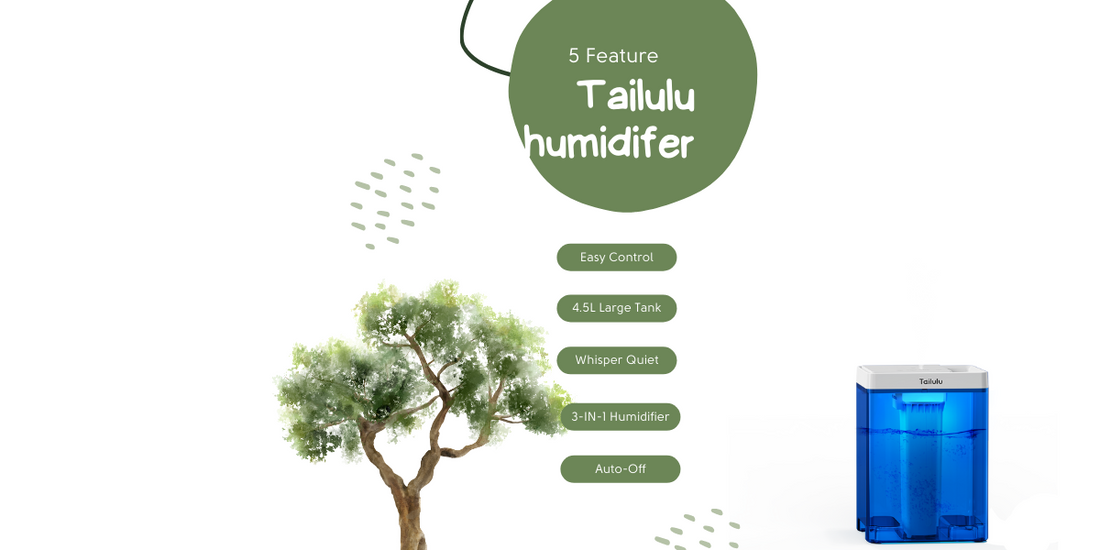In our pursuit of a comfortable and healthy living environment, we often overlook the crucial role of maintaining proper humidity levels. Dry air can have a detrimental impact on our well-being, leading to various health issues and discomfort. Fortunately, a humidifier offers a practical solution. In this blog post, we will explore the inner workings of a humidifier and shed light on its benefits, empowering you to make informed decisions for a healthier and more comfortable home.
Understanding Humidity and Its Importance
Humidity refers to the amount of moisture present in the air. It plays a vital role in maintaining optimal health and well-being. When the air becomes excessively dry, particularly during the winter months or in arid climates, it can lead to a range of problems.
Effects of Low Humidity on Health
- Respiratory Issues: Dry air can cause irritation and inflammation of the respiratory system, leading to coughing, sore throat, and nasal congestion. It can exacerbate symptoms of asthma and allergies, making breathing more challenging.
- Dry Skin and Eyes: Insufficient humidity can strip the skin of its natural moisture, resulting in dryness, itching, and flakiness. It can also cause discomfort and dryness in the eyes.
- Increased Vulnerability to Infections: Dry air dries out the protective mucus membranes in our respiratory system, making us more susceptible to infections like colds, flu, and respiratory illnesses.
- Discomfort: Low humidity levels can cause discomfort, including dry nasal passages, chapped lips, and static electricity.
How a Humidifier Works
A humidifier is a device designed to increase moisture levels in the air, thus improving indoor air quality and comfort. It achieves this by utilizing various mechanisms, depending on the type of humidifier.
Evaporative Humidifiers
Evaporative humidifiers are a popular choice for maintaining balanced humidity levels. Here's how they work:
- Reservoir: The humidifier is equipped with a water reservoir that needs to be filled with clean water.
- Wick/Filter: Inside the humidifier, a wick or filter absorbs the water from the reservoir and becomes saturated.
- Fan: A fan blows air over the moistened wick/filter, causing the water to evaporate into the air.
- Moisture Release: The evaporated water transforms into a fine mist or vapor, which is released into the room, increasing humidity levels.
- Humidity Control: The humidifier continuously adjusts the evaporation rate based on the humidity levels in the room, ensuring optimal moisture balance.
Ultrasonic Humidifiers
Ultrasonic humidifiers utilize advanced technology to produce a cool mist. Here's a closer look at their functioning:
- Ultrasonic Vibrations: These humidifiers employ a metal diaphragm that vibrates at ultrasonic frequencies.
- Water Droplet Formation: The vibrations create tiny water droplets.
- Ceramic Disc: A ceramic disc breaks down these water droplets into an ultra-fine mist.
- Cool Mist Dispersal: The mist is released into the air, increasing humidity levels without raising the room's temperature.
- Quiet Operation: Ultrasonic humidifiers operate quietly, making them suitable for bedrooms or quiet spaces.
Benefits of Using a Humidifier
Using a humidifier offers several notable benefits that can significantly improve your overall well-being and quality of life.
Respiratory Health
By maintaining optimal humidity levels, humidifiers alleviate respiratory problems. The moist air helps soothe irritated nasal passages, reducing congestion and alleviating symptoms of asthma, allergies, and other respiratory conditions.
Skin Hydration
Humidifiers are a boon for those struggling with dry skin. By replenishing moisture in the air, they prevent skin from drying out, reducing itchiness, flakiness, and promoting a healthy complexion.
Improved Sleep Quality
Dry air can lead to discomfort and sleep disturbances. Humidifiers create a more conducive sleep environment by reducing snoring, easing congestion, and preventing dryness in the throat and nasal passages.
Protection for Wooden Furniture and Instruments
Optimal humidity levels help preserve the integrity of wooden items such as furniture and musical instruments. By preventing excessive drying or warping, humidifiers ensure these items remain in top condition and retain their aesthetic appeal.
Maintaining and Using a Humidifier
To maximize the effectiveness and longevity of your humidifier, it is important to follow proper maintenance and usage guidelines.
Regular Cleaning and Maintenance
Regular cleaning is crucial to prevent the buildup of mineral deposits and bacteria in the humidifier. Follow the manufacturer's instructions for cleaning and disinfecting the device, including the filter, to ensure optimal performance and air quality.
Monitoring Humidity Levels
Use a hygrometer, a device that measures humidity levels, to monitor the moisture content in the air. This will help you adjust the humidifier settings to maintain an ideal humidity range.
Choosing the Right Humidifier
Consider factors such as room size, noise levels, energy efficiency, and additional features like timers or essential oil diffusers when selecting a humidifier that suits your needs and preferences.
Conclusion
Understanding how a humidifier works empowers you to create a healthier and more comfortable indoor environment. By maintaining optimal humidity levels, you can alleviate respiratory issues, improve skin hydration, enhance sleep quality, and protect valuable possessions. Choose the right humidifier, follow maintenance guidelines diligently, and embrace the benefits of balanced humidity for a happier and healthier lifestyle.

